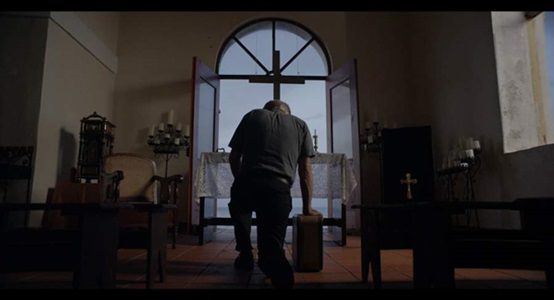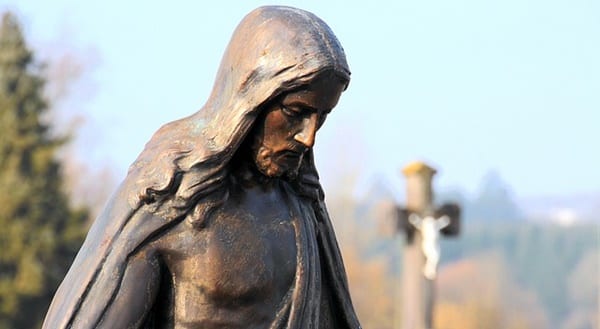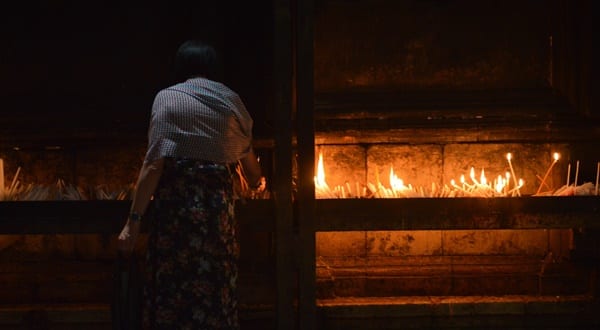
She sat in the emergency waiting room, hoping that the doctor would come with some good news. Her husband just suffered a massive stroke. And I stood outside the waiting room door, trying to think of the perfect thing to say to this wife in the midst of her pain.
I was the hospital chaplain that evening. In my brief time as a chaplain, I learned that nothing can prepare you for such moments. What’s the right thing to say during such an unexpected tragedy? Sometimes there’s nothing you can say. Sometimes the most important thing you can do is listen.
When I opened the door, I was greeted by the woman and her teenage daughter. After building some rapport with them, I asked how they were doing. The woman’s response was odd, but it also amazed me. She told me a story about a time she was at a local amusement park.
She was walking through a haunted house when a toddler started screaming in fear of the darkness. The child’s mother looked around for a way out, but she couldn’t find an exit. She started to move back towards the entrance, but the park employee managing the house stopped her. “Ma’am,” the employee began. “You can’t go back. The only way out is through.”
The only way out is through.
The woman whose husband just had a stroke repeated that phrase. She told me that everyone has options during times of tragedy. We can seek to blame someone else. We can hide in the dark corners of the “haunted house.” We can numb the pain with drugs or alcohol. But she told me that she only had one option in the face of her tragedy: the only way out is through.
That’s good wisdom and it’s reflected in the movie The Vessel, starring Martin Sheen, who plays a priest named Father Douglas. Released in theaters later this year, The Vessel is about a tragedy that strikes a small coastal town in South America. A tsunami sends an enormous wave that engulfs the town’s school, tragically killing all the town’s children.
The Vessel is a story about the different ways this community moves through the darkness of their tragedy. It begins with a classic example of scapegoating. The women manage their pain by creating a prohibition that none of the women are allowed to wear color; they must wear black and they must refuse to have children. The main character, a young man named Leo, explains the situation like this,
They all agreed that the first woman to wear color again is the worst mother in town. Well, my mother wears pink.
Pink is a sign of hope in the darkness of tragedy. It’s a sign that they can move through their tragedy, but the women largely ignore Leo’s mother. Since the wave killed the children, she no longer talked and she isolated herself from the other women. It’s Leo’s new girlfriend, Sorayah, who receives the wrath of the crowd. After finding love with Leo, she decides to wear a bright blue dress. The women and men of the town manage their pain by uniting against her, attacking her at night with torches. Fortunately, Leo comes to her rescue.
The people were stuck in their pain. They were victims without a path toward healing. So they inflicted their pain on a scapegoat. And soon, they would blame God. A woman cries out to Father Douglas,
If a man murders a child, we sentence him to death. But when God kills 46 children we are told to praise him. Sometimes it does feel like God has abandoned this place. If we only had a sign. Just the tiniest glimpse that He still cares…
Where is God in such tragedies? Did God cause the tsunami? Does God cause strokes? Where is God in the darkness? Theologians call these kinds of questions the problem of theodicy – if God is all powerful and good, then why do bad things happen?
The Vessel’s answer to that question is partly found in a vessel. Leo creates a boat from the wood that remains from the school. Father Douglas thinks the vessel could be a sign of hope for the community, but after Leo saved Soraya from the crowd, the crowd marched to the boat and set it ablaze. Just then, Father Douglas ran to the boat, attempted to save it, but he was too late. He reprimanded the crowd. The people then witnessed their destruction of the harmless vessel that could have given them so much hope. They repented of the violent destruction that they caused.
God is like that vessel, but is also like Leo’s silent mother who wears pink. Why is God silent? Why doesn’t God answer our questions? Maybe God’s answers wouldn’t be helpful. Maybe the most helpful thing God can do is show up through a mother who doesn’t talk, but who listens. Maybe God is like a mother who wears a pink dress – pointing us to a more colorful world.
Eventually, the people do move through their pain together, not by uniting against a woman who wears pink or blue, or against a vessel. Rather, they move through their pain by uniting for a common purpose. Their new form of unity includes all the people of the town.
The Vessel symbolizes hope in the darkness. The boat holds us together in community, not united in scapegoating, but united in reconciliation. That’s where we find God in the midst of our darkness. We also find God in one who is like a mother wearing a pink dress in the midst of dark times, and moves with us through the darkness of tragedy into a more colorful world of hope.
For more on The Vessel, read Jason Jones’s article A Resurrection Movie: The Vessel. Jason is the president of Movies to Movement, a nonprofit that seeks to promote “a culture of life, love and beauty through the power of film.”
Stay in the loop! Like Teaching Nonviolent Atonement on Facebook!











